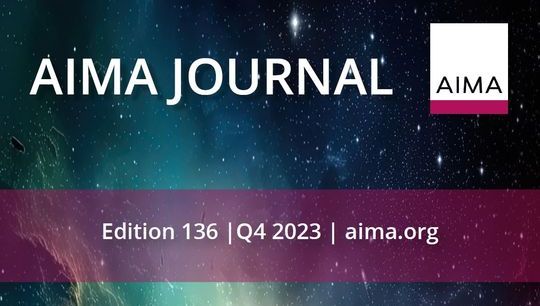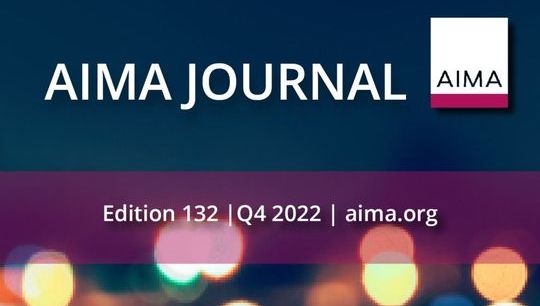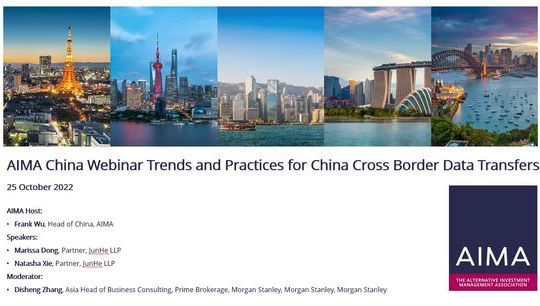The SEC’s Form PF Data usage: Better data better policies
By David A.A. Ross, Viteos Fund Services
Published: 14 June 2019
At the point when Form PF (private fund) was first conceived under the Dodd-Frank Act in the early 2010s, its architects principally viewed it as a resource by which the Securities and Exchange Commission (SEC) could accumulate data on the private funds industry (e.g. hedge funds, private equity, etc.) enabling for better supervision of potential systemic risks. Nearly seven years have elapsed since the first filings began and despite initial misgivings that the SEC would struggle under the weight of all of this reported information, nothing of the sort materialised. In fact, the SEC – like many other regulators – is making good use of the data.
This has happened for several reasons. Firstly, the SEC has developed an extensive range of sophisticated tools to help it sift through the enormous volumes of Form PF data. Through the adoption of automation in these rigorous analytical processes, the regulator is now in a strong position to identify outliers in Form PF submissions, such as anomalies around performance, liquidity, investment exposures, use of derivatives or the extent of leverage.[1] Simultaneously, the data itself has improved organically as investment firms achieve better consistency in how they report, again something that has been facilitated by SEC feedback.
Better data means better policies
By acquiring deeper and more granular insights into private funds’ operating models, the SEC has obtained a better understanding about the industry and its impact on broader financial markets, as well as vice versa. Furthermore, careful analysis of Form PF’s contents has enabled regulators to identify emerging market trends on a timely basis. For instance, the SEC acknowledged Form PF submissions were pivotal in providing them with early and invaluable information about the growth of liquid alts, a subset of hedge funds offering mutual funds to retail clients. [2] This gave the regulator plenty of time to react to this development and introduce liquidity risk management requirements for the asset class.
Past experiences – albeit not necessarily good ones – shaped by Form PF’s troubled early existence have also helped finesse the SEC’s thinking in regards to some of its more recent rule-changes, thereby allowing it to avoid past mistakes. For example, the SEC said lessons learned following Form PF’s implementation were onboarded when it rolled out amendments to Form ADV (i.e. which demanded more information from investment firms about their separately managed accounts) and launched Form N-PORT, [3] a portfolio holdings disclosure requirement (where details on leverage, derivatives, use of convertible bonds, etc. must be supplied) that must be submitted by registered investment funds.
Enforcement boosted by analytics, automation and risk metrics
In 2012, many industry experts warned that Form PF submissions risked causing an information overload at the SEC, which had the potential to hinder its ability to spot frauds quickly – an admonition that touched a particularly raw nerve at the regulator in the context of its failure to identify Bernard Madoff’s decades-long criminality. However, the SEC’s application of analytics, automation and risk metrics has turned the agency into a far more potent regulatory force. Nowadays, the SEC is increasingly and effectively benchmarking managers’ Form PF filings against their ADV submissions,[4] and other available information. Not only does this support the SEC when it conducts routine examinations of managers, but it helps them identify inconsistencies in reported data on exposures, liquidity, and returns.
Better cooperation across regulatory agencies
One of the biggest criticisms of market regulators in the US in the immediate aftermath of the financial crisis was that they failed to liaise with each other. Since then, there has been deeper coordination and consultation across regulatory bodies. For example, Form PF has been regularly shared with the Financial Stability Oversight Council (FSOC) over the last six years, and the Federal Reserve Board since July 2018. The SEC also passes on Form PF information to the Office of Financial Research (OFR), a unit within the Department of Treasury, along with international bodies such as the Financial Stability Board (FSB). A data sharing agreement was also recently signed between the SEC and the International Organisation of Securities Commissions (IOSCO). Again, this is in marked contrast to pre-2008 behaviour when regulators usually operated in silos.
Nowhere has this collegiality been more apparent than in the recent regulatory consultations on leverage. Following on from an FSB report evaluating the structural vulnerabilities in asset management, the International Organisation of Securities Commissions (IOSCO) began consulting with the industry about developing a framework by which to accurately measure hedge fund leverage. [5] This comes as the SEC released data showing that while hedge funds’ cash borrowings had reduced, the role of synthetic leverage has expanded quite significantly from $10.2 trillion in 2017 to $14 trillion in 2018. [6] By disclosing data on a cross-border basis, regulators are helping to curtail systemic risks.
The evolution of Form PF
As with nearly every regulatory report, the initial stages are often marred with operational headaches, and Form PF was not an exception. At the time, managers complained the form was excessively complex, detailed and risked overlapping with other regulatory reports elsewhere such as the Annex IV, introduced under the EU’s Alternative Investment Fund Managers Directive (AIFMD). Today, the compilation of Form PF is a fairly seamless exercise, which is either performed in-house at managers or delegated to competent third party providers. As firms acclimatised to its requirements, Form PF became less of a burden, and is now a process that is fully integrated into the operations of fund managers.
Likewise, the SEC – who faced a barrage of criticism in 2011/2012 from industry stakeholders warning them that Form PF risked overwhelming their limited resources – has proven the sceptics wrong. Not only is the SEC using the data intelligently as a tool to shape policy, but it recognised it made errors when Form PF was first adopted, and has worked diligently to avoid repeating those same mistakes. In addition, Form PF has abetted the SEC with conduct enforcement, and a lot of the report’s contents are now routinely being circulated with domestic and international regulators, thereby helping agencies with market surveillance. As a result, Form PF is playing an instrumental role in suppressing systemic risk.
[5] IOSCO (November 14, 2018) IOSCO seeks feedback on proposed framework for assessing leverage in investment funds
[6] Financial Times (January 13, 2019) Hedge fund leverage risk comes under scrutiny









